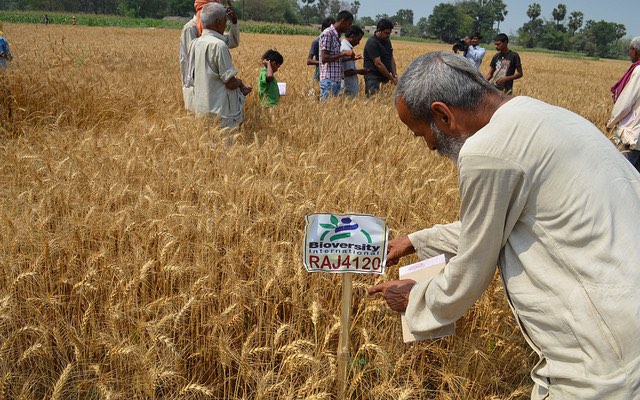Exactly 125 years ago, British agricultural scientist John Augustus Voelcker warned in his Report on the Improvement of Indian Agriculture: “India is a country about which one cannot make a ‘general remark’ and, certainly, with regard to Indian agriculture, this is strictly true.” These words are just as true today as they were in 1893 when Voelcker first published them.
Are Indian farmers slow to adopt scientific methods of agriculture? Like Voelcker, my answer is both yes and no. The same farmers in Punjab who grow brand new varieties of wheat like HD 3086 also continue to use 30-year-old, water-guzzling varieties of paddy like PUSA-44. Similarly, in Bihar, you can find farmers who are growing both modern hybrid maize and a 50-year-old wheat variety, Lok 1, in adjacent plots in the same cropping season. Most farmers in India now own mobile phones and many use them regularly to find information on crop prices, but pay little attention to messages on best practices for their crops.
A more appropriate question, therefore, is: Why do farmers readily adopt some technologies, but not others? Unfortunately, there are no easy answers. Instances of both rapid and slow diffusion of agricultural technologies are more like Tolstoy’s unhappy families—each has its own reasons. Still, there are some common hurdles to the diffusion of innovation in agriculture. I will discuss two of them here: Poor communication of science to farmers and excessive reliance on distortionary subsidies to promote technology adoption.
The ongoing Soil Health Card (SHC) scheme is a case study of ineffective communication between scientists and farmers. Soil tests are often poorly done and farmers know it. Even when the test is done well, we translate test results into recommendations in ways that do not align with farmers’ interests. For example, since 2011, the price of phosphate and potash have more than doubled while the price of urea has remained unchanged, but the equations used to generate fertilizer recommendations have not changed. SHC recommendations try to maximize crop yields while farmers want to maximize profits. To add to that, test results and recommendations are printed in the SHC like they are presented in journal articles.
In a country in which nearly 44 percent of adult women and 25 percent of adult men in rural areas cannot read a sentence in their native language, how we communicate science to farmers is as important as the message itself. When poor quality science, uninformed by even basic economics, is communicated to its audience, in a format alien to them, the outcome is what we are seeing with the SHC scheme: It has had no effect on fertilizer use in agriculture. Worse, we may even have sown the seeds of distrust in farmers towards science-based recommendations.
Subsidies are the government’s favored policy tool to promote agricultural technology in India. Every technology, from quality seeds to new machines, is backed by high subsidies. If designed well, subsidies can accelerate technology adoption and create incentives for innovation. However, our public subsidies are often highly distortionary and mired in red tape and unnecessary regulations that stifle competition and limit farmers’ choices. The 80-90 percent capital subsidy on solar pumps is a good example.
Such a high subsidy encourages companies to add unnecessary bells and whistles to a product instead of developing cheaper versions of it. It also attracts players who are more interested in capturing the subsidy rather than developing the market with better products and after-sales services.
In a country dominated by smallholders, affordable access to any capital-intensive technology needs financial and institutional innovations that would reduce the capex requirement, ensure high capacity utilization and create competitive rental markets.
High pro rata capital subsidy crowds out such innovations and does not allow the development of a non-subsidized market.
Distortionary subsidies have been around for decades and their glaring failures are evident to everyone. Yet, instead of learning from the experience, our policy makers continue to do more of the same while promising different results.
Many other major challenges to accelerating technology adoption by farmers—like small fragmented holdings, high transaction cost of reaching smallholders or low levels of functional literacy among farmers—require concerted grassroots level efforts, both by government and the civil society, in agriculture and non-agricultural sectors of the economy.
In contrast, more effective communication of science to farmers and rationalization of farm subsidies—at least some of them—can be started by a small group of policy makers and technocrats rather quickly to create a huge impact on sustainable intensification of agriculture in India.
Avinash Kishore is a Research Fellow with IFPRI’s South Asia Region office in New Delhi. This post first appeared in the Hindustan Times. Opinions expressed are the author’s.







